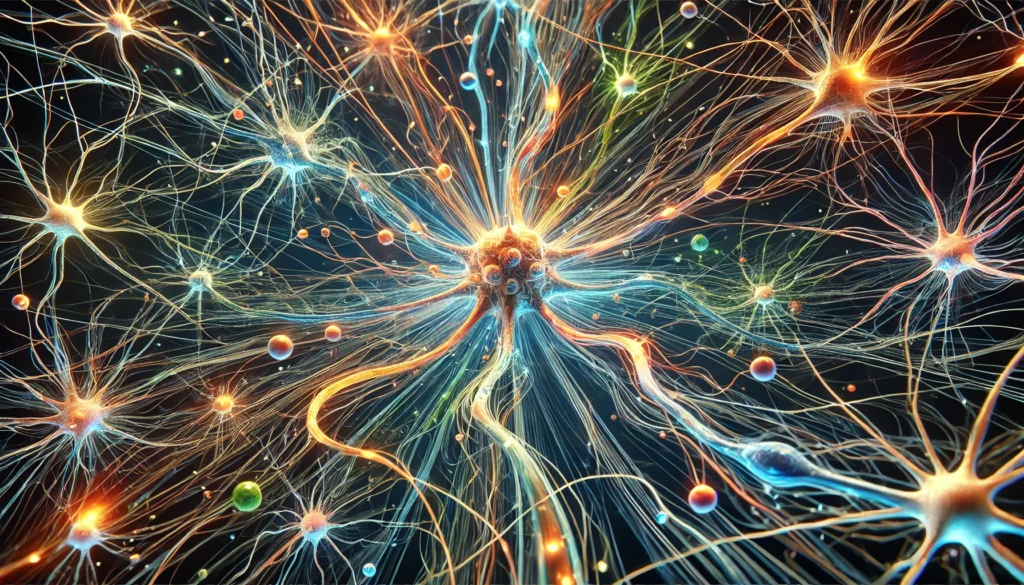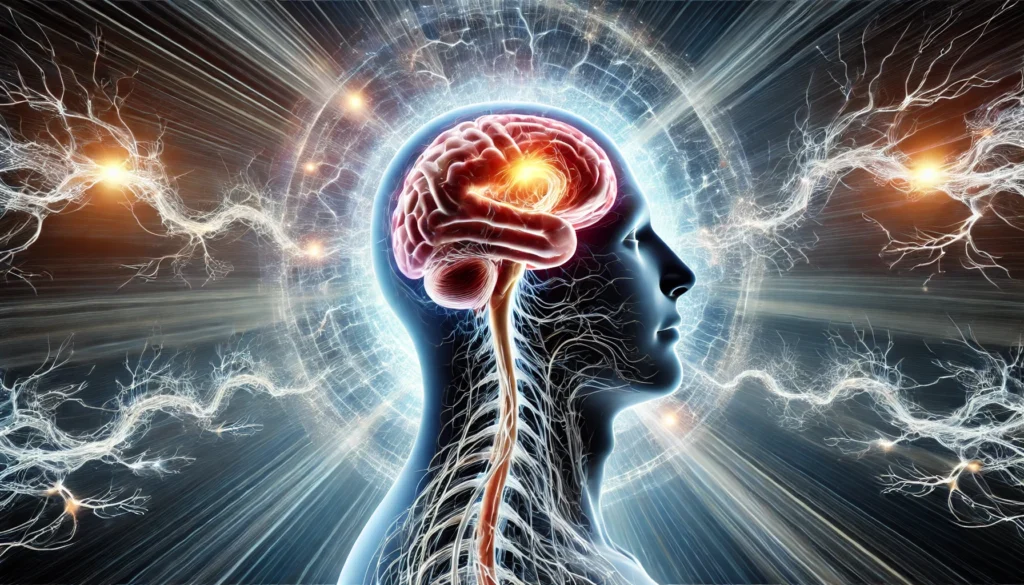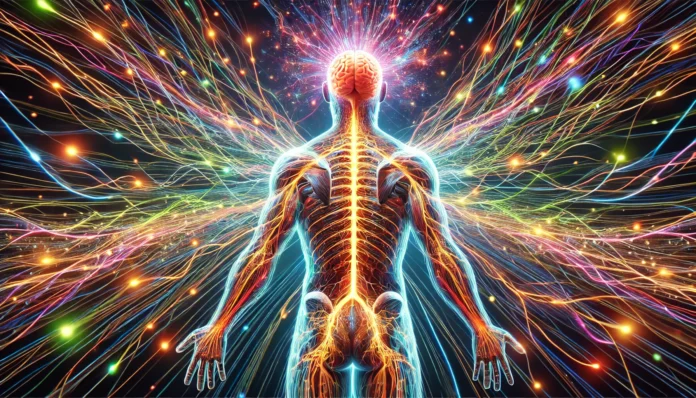Introduction
Understanding how the brain and nervous system function together is fundamental to appreciating human biology and maintaining optimal health. Often called “the organ that controls all body functions,” the brain works intimately with the spinal cord and an extensive network of nerves to regulate everything from conscious thought to involuntary reflexes. Is the brain part of the nervous system? Indeed, the brain is a critical component of the central nervous system (CNS), forming a sophisticated control center with the spinal cord. Throughout this article, we will examine the anatomy of the neurological system, providing insights into brain nervous system anatomy and explaining how the CNS orchestrates various physiological processes, including cognition, motor coordination, and emotional regulation.
You may also like : Best Things for Brain Health: Expert-Backed Strategies to Keep Your Mind Sharp
Understanding the Central Nervous System and the Brain
The central nervous system, consisting primarily of the brain and spinal cord, serves as the body’s main command center, processing information received from sensory organs and initiating responses. The brain and spinal cord diagram typically depicts the complexity and interconnectedness inherent within the CNS. This intricate system enables rapid communication between different body parts, facilitating instantaneous responses to external and internal stimuli. Understanding the central nervous system and the brain provides a foundation for comprehending human behavior, cognitive function, and the body’s physiological responses.
The brain itself is a remarkably complex organ comprised of billions of neurons and supporting cells, structured into distinct regions responsible for specific functions. Among the cns parts, the cerebrum plays a pivotal role in higher cognitive processes such as memory, decision-making, and voluntary movements. The cerebellum coordinates muscle movements and maintains posture and balance, while the brainstem controls vital autonomic functions like heart rate, breathing, and digestion. This comprehensive understanding of central nervous system cerebrum functions and other key areas is critical to both clinical neuroscience and practical health management.
The Brain and Spinal Cord: Central Nervous System Integration
A detailed diagram of the CNS clearly illustrates what connects the brain and the spinal cord—the brainstem—which serves as a critical relay station transmitting signals between the brain and peripheral nerves. The spinal cord, protected by vertebrae, functions as a major conduit for sensory and motor signals, facilitating immediate reactions through reflexes. For instance, when touching a hot surface, sensory information quickly travels to the spinal cord, initiating a reflex action before the brain consciously processes pain.
Brain and spinal cord integration ensures coordinated bodily functions, including complex motor activities like walking, writing, and playing musical instruments. Disorders or injuries affecting this connection can result in significant impairment, underscoring the essential nature of maintaining healthy CNS brain function. Proper care, preventive measures, and understanding risk factors associated with neurological conditions can contribute significantly to lifelong brain health and functional longevity.

Exploring Brain Nervous System Anatomy
The anatomy of the neurological system encompasses detailed structures and functional divisions that collectively ensure smooth and efficient operations throughout the body. At its core, brain nervous system anatomy is defined by distinct yet interconnected structures, including the cerebrum, cerebellum, brainstem, and limbic system. Each plays specialized roles, from regulating emotions and memory to controlling essential bodily functions.
The cerebrum is the largest and most recognizable part of the brain, divided into left and right hemispheres connected by the corpus callosum. It is responsible for higher-order functions such as reasoning, language processing, and conscious perception. Deep within the cerebrum lies the limbic system, integral in regulating emotional responses, memory formation, and motivation.
The cerebellum, located beneath the cerebrum, is critical for precise motor coordination. When asking, “what part of the brain controls and coordinates muscle movement?” the cerebellum stands out for its central role in fine-tuning motor activities and maintaining equilibrium. Dysfunction within this area often results in coordination difficulties and balance disorders, highlighting its importance for overall mobility and functional independence.
Importance of Maintaining Healthy CNS Brain Function
Maintaining optimal CNS brain function is essential not only for physical well-being but also for cognitive longevity and overall quality of life. Healthy lifestyle choices, including regular physical activity, balanced nutrition, sufficient sleep, and stress management, profoundly impact brain and nervous system health. Studies consistently demonstrate that engaging in activities that stimulate cognitive function—such as learning new skills, social interactions, and problem-solving tasks—can strengthen neural connections, enhance brain plasticity, and reduce the risk of neurodegenerative diseases.
Moreover, understanding and actively managing mental and emotional health plays a crucial role in preserving neurological function. Chronic stress and anxiety can lead to a “nervous brain,” characterized by impaired cognition, memory deficits, and reduced emotional resilience. Techniques like mindfulness meditation, cognitive-behavioral therapy, and regular physical exercise have been shown to improve mental clarity, emotional stability, and overall CNS health.

Frequently Asked Questions (FAQ): Brain and Nervous System Health
1. How does stress impact CNS brain function over time?
Chronic stress significantly impairs CNS brain function by elevating cortisol levels, which can damage neural connections, especially in the hippocampus, crucial for memory and learning. A “nervous brain” under prolonged stress experiences accelerated cognitive decline and increased susceptibility to mood disorders. Practical stress-reduction methods like mindfulness meditation, regular physical exercise, and cognitive behavioral strategies can mitigate these effects. Notably, emerging research highlights adaptogens, herbal substances such as Ashwagandha, that may offer neuroprotective effects, reducing stress-related neural damage. Addressing stress proactively preserves neurological health and cognitive resilience throughout life.
2. Can dietary choices affect central nervous system cerebrum health specifically?
Absolutely. Nutrition directly influences central nervous system cerebrum health, particularly through omega-3 fatty acids, antioxidants, and micronutrients like B vitamins. Foods like fatty fish, berries, nuts, and leafy greens support neurogenesis and protect against inflammation. Moreover, recent studies emphasize the Mediterranean diet’s benefits, linking its consumption to reduced incidence of cognitive decline and cerebrum atrophy. Practical dietary integration involves increasing whole food intake while minimizing processed sugars and saturated fats. Maintaining balanced nutrition significantly enhances cognitive longevity and cerebrum function.
3. Besides injuries, what factors can disrupt the brain and spinal cord communication?
Beyond physical injuries, diseases such as multiple sclerosis, infections like meningitis, and autoimmune disorders can severely disrupt brain and spinal cord communication. Multiple sclerosis damages the myelin sheath that insulates nerve fibers, impairing signal transmission. Lifestyle factors such as prolonged sedentary behavior, poor diet, and chronic inflammation also indirectly affect CNS integrity, weakening neural pathways. Early detection through regular neurological check-ups, maintaining active lifestyles, and managing inflammatory conditions can sustain effective communication within the CNS. Understanding these factors enables proactive protection of brain-spinal connectivity.
4. Are cognitive training programs genuinely beneficial for central nervous system and brain longevity?
Cognitive training programs have demonstrated measurable benefits for central nervous system and brain health, particularly in enhancing neuroplasticity—the brain’s capacity to reorganize neural pathways. Regular mental exercises like puzzles, memory games, or language learning actively stimulate cerebral regions, notably in the frontal and parietal lobes. Advanced interventions now incorporate technology-based training, providing personalized cognitive challenges designed to enhance specific neurological functions. Evidence suggests consistent cognitive engagement delays cognitive aging, reducing risks of dementia and memory-related disorders. Thus, adopting cognitive training programs can substantially support CNS health and cognitive longevity.
5. Can emotional trauma affect the anatomy of the neurological system long-term?
Yes, emotional trauma profoundly affects the anatomy of the neurological system, especially within limbic structures like the amygdala and hippocampus. Trauma-induced stress can lead to physical changes, including neuronal shrinkage, reduced synaptic density, and altered neurotransmitter balances. Conditions like post-traumatic stress disorder (PTSD) illustrate long-term changes in brain nervous system anatomy, leading to chronic anxiety, memory disturbances, and impaired emotional regulation. Therapeutic interventions such as EMDR (Eye Movement Desensitization and Reprocessing) and trauma-focused cognitive therapy help rewire neural pathways, potentially reversing trauma-related anatomical changes. Addressing trauma early mitigates its long-term impact on neurological structure and function.
6. How does aging specifically alter central nervous system brain function, and can this be slowed?
Aging naturally affects central nervous system brain function by reducing brain volume, neural density, and synaptic efficiency, resulting in slower cognitive processing and memory challenges. Neurodegenerative diseases like Alzheimer’s further exacerbate these effects. However, lifestyle choices significantly influence this trajectory. Regular physical activity boosts neurogenesis and promotes vascular health, crucial for nutrient delivery to brain tissues. Additionally, cognitive stimulation, social engagement, and nutrient-rich diets significantly slow CNS functional decline. Strategic lifestyle interventions can effectively delay aging-related changes in CNS function.
7. What role do neurotransmitters play in brain and nervous system interactions?
Neurotransmitters are chemical messengers essential for brain and nervous system interactions, facilitating communication between neurons and influencing every physiological and psychological function. For instance, dopamine regulates motivation and motor coordination, serotonin affects mood and sleep, while GABA modulates neuronal excitability and anxiety levels. Imbalances in neurotransmitter levels can lead to mood disorders, anxiety, and cognitive impairments. Therapeutic interventions such as targeted pharmacological treatments and lifestyle modifications (diet, exercise) can help regulate neurotransmitter production and activity. Proper neurotransmitter balance is fundamental to maintaining comprehensive CNS health.
8. How can sleep quality impact the central nervous system and the brain specifically?
Sleep significantly impacts the central nervous system and the brain by facilitating memory consolidation, neural repair, and toxin clearance. Poor sleep quality disrupts these processes, contributing to cognitive impairment, mood disturbances, and elevated risk for neurological disorders like Alzheimer’s. Innovative research highlights the glymphatic system’s role during sleep, effectively removing neurotoxins accumulated throughout the day. Improving sleep hygiene through regular schedules, limiting screen time before bed, and creating restful sleep environments substantially enhances brain health. Thus, prioritizing sleep directly supports CNS functionality and longevity.
9. Are there specific exercises that benefit what connects the brain and the spinal cord?
While general physical activities like aerobic exercises are widely recognized for CNS benefits, specific exercises that enhance proprioception and spinal alignment particularly support what connects the brain and the spinal cord—the brainstem. Yoga, Pilates, and tai chi significantly improve proprioception, balance, and spinal posture, enhancing neural efficiency between brainstem and spinal nerves. Exercises promoting spinal flexibility and core strength facilitate smoother neural communication, enhancing motor coordination and reflex efficiency. These targeted practices are especially beneficial in rehabilitative settings, improving recovery outcomes post-injury. Incorporating these exercises regularly supports optimal brain-spinal integration and CNS health.
10. Can mindfulness practices directly improve CNS brain function?
Mindfulness practices directly benefit CNS brain function by increasing gray matter density in regions associated with memory, learning, and emotional regulation, such as the prefrontal cortex and hippocampus. Regular mindfulness exercises also reduce amygdala activity, lowering stress responses and promoting emotional resilience. Practicing mindfulness through meditation, deep breathing, or mindful movement significantly enhances neural plasticity and cognitive flexibility. Recent studies further indicate mindfulness as an effective adjunctive treatment for anxiety, depression, and cognitive decline. Consistent mindfulness practice contributes substantially to improved CNS functionality and overall neurological well-being.

Conclusion: Embracing Brain Health for Longevity
Understanding how the brain and nervous system interact empowers individuals to make informed decisions that support long-term brain health and cognitive enhancement. The brain and spinal cord, along with their interconnected networks, form the foundation of human functionality, cognition, and emotional balance. By prioritizing preventive care, adopting a brain-healthy lifestyle, and remaining vigilant to potential neurological issues, individuals can significantly improve their chances of enjoying prolonged cognitive vitality and physical independence.
The central nervous system and the brain represent the pinnacle of biological complexity and efficiency, ensuring seamless coordination among countless physiological processes. Embracing the principles of brain health, including regular exercise, balanced nutrition, cognitive stimulation, and emotional regulation, provides the foundation for lasting neurological health and longevity. Ultimately, appreciating the intricate anatomy and function of the brain and nervous system enables individuals to foster resilience, enhance cognitive capacities, and achieve sustained wellness across their lifespan.
brain health, neurological wellness, neuroplasticity exercises, spinal health, cognitive resilience, nervous system disorders, cerebellar function, neuroprotective strategies, emotional trauma recovery, mindfulness meditation benefits, neurotransmitter balance, mental clarity techniques, brain aging prevention, neural pathway repair, stress reduction methods, cognitive training tools, brainstem health, sleep quality improvement, holistic neurology, neurogenesis promotion
Further Reading:
Regulation of body temperature by the nervous system
From Neurons to Synapses: How Does the Nervous System Work?
Brain Facts: A Primer on the Brain and Nervous System
Disclaimer
The information contained in this article is provided for general informational purposes only and is not intended to serve as medical, legal, or professional advice. While Health11News strives to present accurate, up-to-date, and reliable content, no warranty or guarantee, expressed or implied, is made regarding the completeness, accuracy, or adequacy of the information provided. Readers are strongly advised to seek the guidance of a qualified healthcare provider or other relevant professionals before acting on any information contained in this article. Health11News, its authors, editors, and contributors expressly disclaim any liability for any damages, losses, or consequences arising directly or indirectly from the use, interpretation, or reliance on any information presented herein. The views and opinions expressed in this article are those of the author(s) and do not necessarily reflect the official policies or positions of Health11News.


